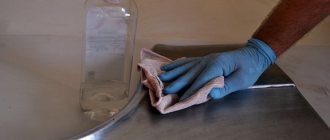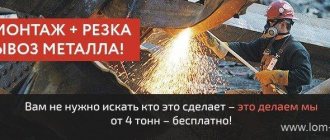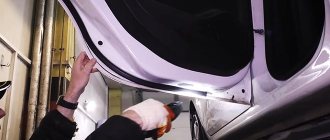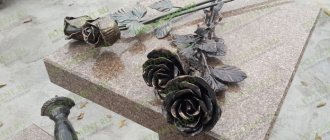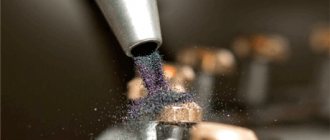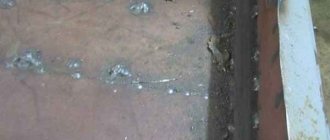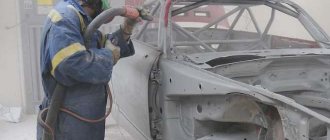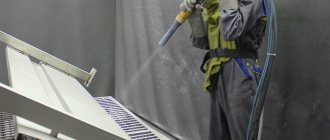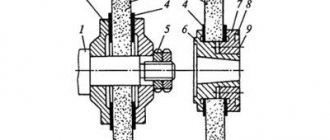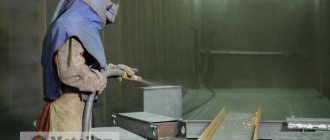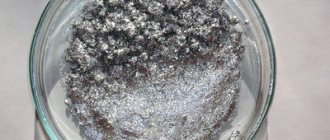Anti-corrosion protection of metal structures can be divided into two different classes for solving the problem of emerging corrosion: 1) Corrosion inhibitors (the general name for substances that suppress or delay the course of physiological and physico-chemical corrosion processes), the application of which creates a protective layer of metal structures from corrosion. 2) Protectors - a surface insulated from corrosion is protected by another surface that is more susceptible to an aggressive environment, thereby forming an additional layer subject to corrosion.
This article will look at several options for corrosion inhibitors and protectors , namely anti-corrosion coatings from the AKTERM company.
We carry out anti-corrosion treatment of metal on a turnkey basis in accordance with the SRO certificate
The range of services includes:
- assessment of the condition of metal structures;
- selection of technology and materials, preparation of a processing project;
- anti-corrosion treatment of metal, separately or in combination with fire retardant treatment;
- quality control;
- applying the finishing coating;
- When carrying out fire retardant treatment, we hand over the facility to the Ministry of Emergency Situations ourselves.
"Tehstroygarant" provides anti-corrosion protection of metal and reinforced concrete structures for any purpose.
Anti-corrosion treatment is often ordered from us along with fire protection of metal structures.
Causes of destruction of metal surfaces
Anti-corrosion protection of metal structures is a necessary condition for the use of metal elements in any buildings.
Containers, pipelines, and individual parts of mechanisms and vehicles made of metal could last forever, if not for reactions that cause corrosion. Huge steel structures can collapse at some point, causing enormous damage and killing people, if they are not treated with a special compound. Corrosion is caused by:
- moisture
- atmospheric air
- any gas
- petroleum products
- microorganisms
- electrolytes
- friction
- temperature fluctuation and other factors
This complex interaction process ends in the destruction of the metal. It's difficult to fight him. It's better to prevent a reaction. To do this, you need to apply an anti-corrosion coating, which will create a protective film and protect it from harmful external influences. The result depends on the characteristics of the composition and the quality of its application.
We produce anti-corrosion protection for any metal structures
- metal bases and foundations;
- pipelines for any purpose;
- liquid reservoirs, tanks;
- metal structures of industrial enterprises;
- building metal structures;
- steel reinforcement, metal frames;
- berthing facilities, ships;
- metal roofs.
We will develop an optimal technical solution for you, perform anti-corrosion treatment of metal structures without involving third-party specialists, and provide a guarantee on materials and work performed.
Call: 8 (495) 150-5-987 and consult for free!
Why do you need anti-corrosion protection?
Now let’s take a closer look at why anti-corrosion protection is needed. Such protection is especially important for cars. Since the anti-icing additives that are sprinkled on the highway during icy conditions in winter, various defects and scratches resulting from the ingress of pebbles and grains of sand while driving on rural roads significantly reduce the service life of the car. Namely, they will allow rust to penetrate into the metal and corrode it. In such cases, protective coatings are very important.
Corrosion
And steel and cast iron objects lose their sealing properties, thermal conductivity and strength over time without proper anti-corrosion coating. They become completely unsuitable for further work with them. Scientists have estimated that about ten percent of all metal mined on earth is spent on patching holes that appear due to delays in applying anti-corrosion coating. Or no anti-corrosion protection is applied at all.
In addition to domestic accidents, metal corrosion can also provoke environmental disasters. Tons of oil and gas can leak from worn-out pipelines at any time, which will naturally pollute the earth's atmosphere, destroying flora and fauna.
That is why it is so important to cover all metal products with anti-corrosion coatings in a timely manner. Of course, it is impossible to completely avoid the appearance of rust and aging of steel, iron, and cast iron, but this negative impact can be stopped.
In modern times, corrosion control has been divided into several groups that use different rust resistance methods.
- Protect products using electrochemistry.
- Rust-resistant materials are produced.
- Special compounds are introduced into the rusting environment.
- Use metal parts and structures correctly, without subjecting them to violent destruction.
Anti-corrosion mastic
Mastic-treated pipes
For this purpose, special means, anti-corrosion materials and methods of applying them to metals were created.
We effectively prevent irreversible changes in the structure of metal structures
Metals, especially ferrous ones, are exposed to aggressive environments during operation. The result of such exposure is corrosion - an irreversible change in the structure of the metal. As a result, there is a loss of strength, load-bearing capacity, integrity, and functional properties.
Main types of corrosion:
- liquid. The aggressive factor is moisture. The corrosion process is accelerated by salts contained in sea water and other chemically active substances dissolved in water;
- atmospheric. Here, too, the main effect is water, only in the form of vapor. Increased levels of chemically active substances in the atmosphere enhance corrosion;
- soil The changes affect foundations and other underground structures. The main aggressive factor is groundwater; the rate of corrosion depends on the composition of the soil.
Types of corrosion also differ in the result, i.e. according to the nature and intensity of damage:
- surface – local areas of rust on the surface of the structure;
- cracks of different depths;
- oxidation of only one of the alloy components;
- extensive rust affecting the metal over the entire area and to great depth.
Metal structures that should be protected from fire
In accordance with safety standards, fire protection is mandatory for the following types of metal structures:
- load-bearing and supporting structures, which bear the main load;
- having constructive significance;
- open, therefore primarily exposed to the flame.
In addition, it is important to protect connections and fastenings if their destruction or distortion can lead to the collapse of parts of the building.
It is necessary to ensure protection of the following metal structures made of steel, cast iron and aluminum:
- all load-bearing elements: columns, floor beams, trusses, etc.;
- stairs and flights;
- roof, its fragments and supports;
- metal frame components;
- parts of fire fences.
You can do without protecting metal structures if
:
- such parts do not belong to the main structure of the building;
- the object is not standardized according to the degree of fire danger and is equated to category V;
- the structure has lower fire resistance than its metal elements;
- It is possible to use unprotected structures up to class R15.
It is worth clarifying that in the above cases, it is permissible to refuse to protect metal structures, since in any case they will be destroyed by fire later than the building itself.
Examples of anti-corrosion treatment work performed
Fire retardant and anti-corrosion treatment in the elite residential complex Polyanka 44
Fire protection of load-bearing metal structures and anti-corrosion treatment of the construction site of a residential complex with an underground parking lot “Polyanka 44” has been completed. The reconstruction of the residential complex is being carried out by a large general contractor "CODEST". The most modern and reliable fireproof materials Promat were used.
Read more >>
Fire protection and anti-corrosion treatment of non-residential premises of the Zvezda film studio
"TehStroyGarant" carried out fire protection and anti-corrosion treatment of load-bearing metal structures and engineering systems in the premises of the TV and film studio of the Zvezda TV channel with a total area of 2421.9 sq.m. The work was carried out in difficult access conditions.
Read more >>
Anti-corrosion treatment in the Boiler House on the territory of the military-patriotic park in Kubinka
We completed anti-corrosion treatment of a total area of 3000 m of the boiler room for the heat supply system of the Military-Patriotic Park of Culture and Recreation of the RF Armed Forces “PATRIOT” in the city of Kubinka, Moscow region.
Read more >>
VIEW ALL PROPERTIES
Where are our services needed?
To protect metal structures from destruction, we perform anti-corrosion treatment:
- in hazardous industries - chemical and oil industry enterprises;
- in industrial and residential development;
- when installing pipelines for the oil and gas industry and pipelines for water supply;
- in shipbuilding and for anti-corrosion protection of port facilities.
Our licenses
License No. 50-B/00378
SRO extract N0000627
More details
We carry out work in accordance with standards for anti-corrosion treatment of metal structures
When anti-corrosion treatment of metal, we are guided by the requirements of the following documents:
- GOST 21.513.83 – features of anti-corrosion protection depending on the functionality of the structure and the presence of aggressive factors;
- SNiP 3.04.03-85 and its updated version SP 72.13330.2016 – protection of metal and reinforced concrete building structures from corrosion;
- GOST 9.402.2004 and 9.402-80 – preparation of metal surfaces for anti-corrosion painting.
The first part of SNiP/SP is devoted to surface preparation. This is a fundamentally important stage of anti-corrosion treatment: the durability of the protection depends on the quality of preparation. This process includes:
- removal of burrs, sagging, welding spatter, cracks, irregularities;
- cleaning from rust, dirt, scale, old paint;
- degreasing;
- removal of active chemicals – alkalis, acids, etc.;
- Roughening the surface to improve adhesion.
Surface cleaning methods:
- sandblasting;
- hydrosandblasting;
- shot blasting;
- using an abrasive tool;
- alkaline;
- acidic;
- using organic solvents (white spirit, gasoline);
- oxidation;
- phosphating;
- chemical etching;
- gas plasma treatment (allowed for metal thickness from 6 mm);
- thermal;
- ultrasonic;
- washes.
GOST also regulates the degree of cleaning, from 1 to 4, depending on the type of anti-corrosion coating.
The joint venture further describes the technology for applying different types of protective coatings:
- paint and varnish;
- mastic, putty, self-leveling;
- based on liquid rubber;
- pasting (bitumen, polymer);
- gumming;
- metallization and combined;
- facing and lining.
The final part of the document provides methods for quality control of finished anti-corrosion coatings.
We also offer fire retardant treatment of metal and wooden structures and fire protection of air ducts. Work experience - 10 years. Hundreds of completed projects.
Call: 8 (495) 150-5-987 and consult for free!
The best anti-corrosion agents for external surfaces
The external surfaces of the car are exposed to more aggressive temperatures, moisture and mechanical damage from gravel flying from under the wheels. Therefore, the products for them must be resistant to abrasion, have high adhesion to metals, increased moisture resistance and partial elasticity - so that the coating can adapt to the deformations of the body.
Pingo Stein Schlas-schutz
5
★★★★★
editorial assessment
100%
buyers recommend this product
Reliable and durable German-made anti-corrosion agent is made on the basis of bitumen, elastomers, rust inhibitors and special additives to increase mechanical wear resistance. The progressive formula of the drug is characterized by high adhesion and adaptability to temperatures from -30 to +50 ° C. The protective layer resists ultraviolet radiation and high humidity, aggressive reagents and acids.
Before application, the surface must be washed and dried. Work should be carried out in a warm, ventilated area. After hardening, the layer can be painted. The composition is sold in bottles of 0.5 and 1 liter.
Pros:
- High mechanical strength;
- Long-term rust protection;
- The smell disappears quickly;
- Convenient self-application with an aerosol;
- Huge margin of safety in aggressive environments.
Minuses:
- Expensive.
The manufacturer recommends protecting with anticorrosive those parts of the body that are more susceptible to mechanical destruction than others by sand and gravel flying out from under the wheels (sills, skirt, lower door area, hood). The warranty on the treated surface is at least 3 years.
Auson Mercasol 5
5
★★★★★
editorial assessment
100%
buyers recommend this product
Premium anti-corrosive material with high anti-gravel properties based on alkyd resins and polymers from a European manufacturer forms a dense, elastic-elastic coating. It successfully resists the effects of aggressive substances and damage from sand and gravel particles. The composition effectively protects against rust and provides good sound insulation.
Before applying the product, the surface must be cleaned of dirt, corrosive deposits and greasy stains. The manufacturer recommends applying the anticorrosive agent 5 mm thick in several layers, drying each layer for 15-20 minutes. After drying for a day, the coating can be painted with any type of paintwork.
Pros:
- Quality components;
- Noise and vibration insulation properties;
- Long-lasting rust protection (up to 8 years);
- Excellent adhesion;
- Frost and moisture resistant.
Minuses:
- High price.
The manufacturer recommends treating the surfaces of the thresholds, rear and front sand guards, wheel arches, and the bottom of the car with Mercasol.
Tectyl-Valvoline Underbody Coating 120-EH
4.9
★★★★★
editorial assessment
97%
buyers recommend this product
A professional product for protecting cars operated in extremely difficult or extreme conditions. A thixotropic preparation based on dense bitumen compositions with paraffin and zinc prevents corrosion and abrasive damage to the bottoms of cars and trucks, buses, camper vans, and cargo trailers. The durable, elastic, bronze-colored film that forms after applying the solution protects against moisture, chips, stone impacts and rust.
The substance has good adhesion to metal, soil, paintwork materials and even wood. The composition is applied to a cleaned surface 2 mm thick in several layers, stops sticking after 3 hours, and dries completely in two days.
Pros:
- Suitable for any vehicles;
- Enhanced protection against moisture and mechanical damage;
- Easy application;
- High adhesion to different surfaces;
- Long warranty.
Minuses:
- Minimum packaging – 60 l.
Enhanced anti-corrosion characteristics allow you to reliably protect your car in severe weather conditions: movement in arid regions, strong winds, frequent contact of the bottom with reagents or moisture. But the large packaging makes such a purchase impractical for independent use. But in a car service, a Tectyl-Valvoline barrel will come in handy.
READ ALSO
10 best paints for wheels
A.M.T Inc. Rast Stop "B"
4.9
★★★★★
editorial assessment
96%
buyers recommend this product
A unique multi-component solution from a Canadian manufacturer contains highly purified biologically pure oil, natural-based corrosion inhibitors and thixotropic additives. Due to the excellent penetrating ability of the components, the composition penetrates the metal, “pushing out” water from there, and suppresses corrosion processes. The product spreads well over the treated surface, constantly mixes and moves in the layer without completely hardening.
The composition can be applied over the previous coating - only the peeling fragments need to be removed. You can apply Rust Stop to a washed, damp car, which can be driven immediately after finishing the work - no drying required. The substance does not contain toxic solvents and has a pleasant odor. Anticor has received international certificates of quality ISO 9002 and environmental safety ISO 14000.
Pros:
- Does not require preliminary surface preparation;
- Creates a durable barrier against mechanical stress and moisture;
- Able to “heal” minor injuries;
- Does not freeze or crack due to temperature changes;
- Harmless and non-toxic.
Minuses:
- There are fakes.
When treating the bottom surface covered with old, heavily damaged mastic, the manufacturer advises alternating layers of Rust Stop “B” (for external surfaces) and Rust Stop “A” (for hidden cavities). In order not to run into a fake, it is safer and cheaper to order anticorrosive on the official website.
HB Body 930 Bitumen
4.8
★★★★★
editorial assessment
88%
buyers recommend this product
Italian anticorrosive agent with a thixotropic composition on a bitumen-rubber base, after application, forms a strong and elastic film on the surface that protects the body from moisture, impacts of sand and gravel. Corrosion inhibitors stop the spread of existing rust and prevent new lesions from appearing. The complex structure of the coating, up to 5 mm thick, closes all microcracks and well dampens vibration and noise from wheels.
The product is characterized by equally high adhesion to steel surfaces, soil and paintwork materials, does not lose elasticity throughout its entire service life and is able to “self-heal” mechanical damage. The composition is applied to a dry, clean surface in at least 2 layers with a brush or spray gun (in the second case, it requires dilution with a solvent by 10-20%).
Pros:
- Contains only high-quality expensive components;
- Does not leave smudges;
- Wear-resistant and impact-resistant coating;
- Prevents abrasive wear;
- Good sound insulation.
Minuses:
- The coating cannot be painted.
The composition has an international certificate of conformity ISO 9001, which is an official guarantee of quality and high level of production. The product is intended for application to the outside of the car's underbody.
Classification of metal anti-corrosion protection methods
There are passive and active anti-corrosion protection. Passive anti-corrosion protection of metal is divided into two classes:
- corrosion inhibitors - substances that form a protective layer on the surface of the structure;
- protectors are substances that are susceptible to the influence of aggressive environments. An additional covering layer is formed between the medium and the protected structure.
Active anti-corrosion protection technologies:
- hot galvanizing – coating the surface with a layer of molten zinc. The method is particularly suitable for the treatment of ships and tanks;
- galvanic (electrochemical) galvanizing – a zinc coating is formed during the electrolysis process. Mainly used for small and medium-sized parts;
- thermal diffusion galvanizing - surface treatment with zinc powder at high temperatures (290-450 degrees);
- aluminizing – aluminum spraying using a ferroaluminum powder mixture;
- faoliting (faolite is an acid-resistant plastic coating);
- alloying – the alloying alloy contains substances that reduce the chemical activity of the metal;
- electrochemical anti-corrosion protection. A sacrificial anode made of metal with strong electronegative properties is connected to the enclosed structure. Polarization reduces the rate of electrochemical corrosion process on the surface of the structure. The method is suitable for protecting pipelines and pile foundations;
- deaeration of the environment, reducing its aggressiveness.
The best anti-corrosion agents for internal (hidden) surfaces
The internal parts of the body (the inner surface of the bottom, side members, doors and door pillars) are covered with skin, which complicates the process of applying anticorrosion. Preparations in this group must be highly elastic, neutral with respect to paint, plastic or rubber, have high hydrophobicity and the ability to “preserve” rust.
Dinitrol ML
5
★★★★★
editorial assessment
100%
buyers recommend this product
The unique composition based on European-made wax components has excellent penetrating ability. This allows it to get into microcracks in the metal, overcome rust, and displace salt and moisture from the most inaccessible places. The product is enhanced with film formers, corrosion inhibitors and solvents, which leave a dense protective film on the surface. It blocks the access of oxygen and moisture, thereby slowing down the process of metal corrosion.
Before application, it is recommended to clean existing large pockets of rust on the surface to be treated and wash the car in a car wash to get rid of oil stains, traces of bitumen and heavy dirt. It is advisable to carry out the treatment in two layers on the still wet iron with mandatory coating of all welds, joints and rusty spots.
Pros:
- Excellent penetrating properties;
- Blocks the development of corrosion;
- Forms a fatty, elastic film;
- Convenient self-application with an aerosol with a long tube;
- Does not damage rubber and plastic elements, is inert to various paints and varnishes;
- Packaged in aerosols of 500 and 1000 ml, as well as in cans of 5 kg.
Minuses:
- High price.
The solution is suitable for treating hard-to-reach hidden cavities of vehicles. It is allowed to apply the product to heavily rust-damaged areas of a car with a long service life. Anticorrosive is also suitable for cleaning and drying parts that are difficult to clean by hand.
Liqui Moly Hohlraum-versiegelung
5
★★★★★
editorial assessment
100%
buyers recommend this product
Effective German composition with high anti-corrosion properties. The wax-based formula in the form of a weakly thixotropic liquid spreads well and displaces water from hard-to-reach places. A few hours after application, it forms a translucent brownish film that protects the car from moisture and blocks rust. It is advisable to work as an anti-corrosion agent after preliminary cleaning of the surface at a temperature of at least 15-25 °C.
Pros:
- Convenient aerosol packaging with a spray tube;
- Sufficiently wide temperature range of application;
- Good fluidity;
- High anti-corrosion protection even from salt water;
- Fast drying.
Minuses:
- Price.
The product is convenient for treating body voids of both new and used vehicles with significant areas of corrosion. The translucent protective film allows you to see the appearance of new rust stains in time and take action.
Loctite SF 7803
5
★★★★★
editorial assessment
100%
buyers recommend this product
The oil-based protective coating with Swedish-made paraffin wax and corrosion inhibitors boasts long-term anti-corrosion protection and good UV resistance. Thanks to the non-drying and non-sticky coating, the solution retains its properties at temperatures from -30 to +60 ° C. The formula is enriched with solid lubricants: aluminum and graphite to prevent excessive friction of parts.
Pros:
- Long-term protection;
- High efficiency;
- Does not collapse due to drying;
- Economical consumption;
- The smell disappears quickly.
Minuses:
- Expensive.
The composition has a very successful formula. In addition to treating the internal cavities of a car, the product can be applied to iron and steel parts of other mechanisms, pipes, equipment and structures used outdoors.
Auson Noxudol-700
4.9
★★★★★
editorial assessment
94%
buyers recommend this product
The Swedish-made anti-corrosion composition in the form of an aerosol is made without the use of solvent, which indicates its environmental friendliness. The completely non-hardening components of wax-based products penetrate into micro-gaps and hard-to-reach areas of internal cavities 3-4 times better than usual.
After application, the substance turns into an elastic film that displaces water, dirt and blocks the access of oxygen. When treating a surface affected by corrosion with the composition, the process of its destruction stops.
Pros:
- High hydrophobicity;
- Effective anti-corrosion protection;
- Reasonable cost;
- Safety of the composition for the environment;
- Virtually odorless;
- Available in containers from 0.5 to 208 liters.
Minuses:
- Before starting treatment, the bottle must be heated to 30°.
Noxudol is used to treat various internal cavities and crevices of the car body. In addition, it can be used for temporary preservation of vehicles or their parts for storage or transportation.
Nanoprotech "Super Anticorrosive"
4.8
★★★★★
editorial assessment
88%
buyers recommend this product
A high-tech Russian development based on an innovative formula with nanoparticles penetrates deep into the metal and displaces moisture from its very structure. The substance has high lubricating, anti-corrosion and protective properties, since it contains highly purified mineral oil, paraffin hydrocarbons, antioxidants and hydrocarbon propellant.
The solution practically does not require special preparation of the vehicle for coating; it can be applied to a damp surface, which only increases adhesion. The composition is safe for any metals and paintwork.
Pros:
- Forms a durable elastic coating;
- Long period of protection;
- Economical consumption;
- Effective at temperatures from -80 to +140 °C;
- Reliable anti-corrosion protection, confirmed by laboratory tests.
Minuses:
- There is underfilling - 170 ml instead of 210 ml declared by the manufacturer.
The product can be used to treat internal surfaces of the body, sills, arches, hidden cavities of the interior and trunk, hinges and bolts. “Super Anticor” effectively copes with the preservation of construction and agricultural equipment for the winter.
MasterWax "Movil-NN" with rust converter
4.6
★★★★★
editorial assessment
85%
buyers recommend this product
An ageless classic with an enriched formula from a well-known domestic manufacturer, available in the form of an aerosol and solution. A special feature of the product is vegetable tannin, which converts rust into an inert, loose layer that is easily removed from the surface. The wetting agent included in the product promotes deep penetration of the solution into the corroded layers and evaporation of moisture from the surface.
After processing, the iron is covered with a brown wax film, neutral for paintwork. This barrier does not allow oxygen and moisture to pass through, making metal oxidation impossible. Before applying Movil, the surface must be cleaned of scale (not to a shine), washed with water and dried.
Pros:
- An effective remedy;
- Convenient cylinder with a long tube for hard-to-reach places;
- Decent volume (cylinder – 1 l, jar – 3 l);
- Low toxicity;
- Low cost.
Minuses:
- Persistent unpleasant odor;
- May damage rubber surfaces and coatings made from synthetic chemicals.
Car owners coat closed cavities with the substance: sills, pillars, surfaces behind the radiator trim. The lack of mechanical hardness makes the use of Movil impractical on the outside of the body.
READ ALSO
15 best car polishes
We offer modern means and technologies for anti-corrosion treatment of metal structures
We use several anti-corrosion protection technologies in our work:
- painting - applying primer and anti-corrosion paint;
- galvanizing – coating a metal surface with a layer of zinc;
- aluminization;
- Faolitting;
- liquid rubber treatment – application of a two-component elastomer to the surface;
- electrochemical processing.
We select the appropriate method and material depending on the following factors:
- design functionality;
- terms of Use;
- type of metal, its features;
- type of aggressive influence;
- price of material and processing.
The most popular materials:
- weather-resistant anti-corrosion alkyd enamel PF-115 (Lakra);
- two-component epoxy primer-enamel AntikorKhim (JSC PKF Spectr);
- rust converters;
- cold galvanizing compositions.
We have already protected more than 70 objects and guarantee increased durability of load-bearing structures
Call 8 (495) 150-5-987
Fire protection methods for metal structures
The methods used today in construction to protect metal and wood from direct fire and the thermal effects of fire appeared a long time ago. At the moment, more modern approaches and tools are being created.
The real picture is reflected in the current rules, such as SP 2.13130.2012, designed to regulate the resistance of objects to flame. This set of rules particularly focuses on the fire protection of metal structures and other elements of buildings and structures.
The following are methods for protecting metal structures from fire and thermal effects, which experience serious stress as part of the structure.
The basis of such constructive fire protection is the formation of a heat-insulating layer on the surface of building elements open to external influences. Such a protective coating must be of sufficient thickness and quality to cope with fire and heat for a specified period of time. The latter is recorded by fire safety during design or construction in terms of ensuring fire resistance:
- Fire protection of columns, metal support pillars supporting floors, coverings of buildings and structures
.
Initially, natural stone, brick, and slab materials of natural and later artificial origin were used for this purpose. Such cladding from the floor to the ceiling protects the metal structure from possible exposure to fire. Previously, the above materials were laid around a column or pillar using building lime mortar.
Now they use other methods of fastening slab, sheet and roll materials. They are fixed on a frame with air gaps - thus reducing the load on the interfloor floors and reducing the cost of protecting metal structures from fire.
- Fire protection of beams
.
Obviously, such metal elements are difficult and sometimes impossible to protect from contact with fire using stone, brick or slabs, since they are located under the ceiling. In addition, the protection described above can be dangerous for everyone in the building, especially in areas with a high probability of earthquakes.
For this reason, metal beams, like columns and pillars, are covered with a layer of wet plaster, cement mortar, or by concreting over wooden shingles or metal mesh.
Various fire-retardant viscous mixtures are also used, the fire resistance limit of which depends on the thickness of the application. However, this approach has serious disadvantages: because of it, the load on the building’s floors increases, it also involves additional costs and the external massiveness of metal structures under such protection. The last drawback often becomes decisive for architects and customers of building projects.
- Fire protection of stairs
.
Stairs are found in most buildings and provide a means of evacuating people, so increased attention is paid to their fire protection. In design and construction, they often resort to prefabricated, relatively cheap metal stairs, which can be set to any slope, height, and width of flights.
They are treated with all the methods mentioned above, including thin-layer sprayed agents.
To protect load-bearing metal structures of buildings and stairs from fire, a combined method is used, combining different types of processing.
Recommended articles
- Metal hardening: technology and choice of temperature conditions
- Metal galvanizing: we understand the methods, eliminate defects
- Types of metal corrosion: classification, methods of protection
Regardless of the technology for applying or fastening fire-retardant materials, SP 2.13130.2012 requires that they comply with technological methods recorded in fire resistance test reports.
Compositions designed to protect metal structures are easy to apply and do not require special operating conditions. Their layer can be easily restored after mechanical damage by treating the affected areas. In case of fire or corrosion, the coating significantly reduces the likelihood of complete destruction of the object and reduces restoration costs.
The use of the approaches described above is considered mandatory for civil and industrial construction, therefore means of protecting metal structures are always in demand.
